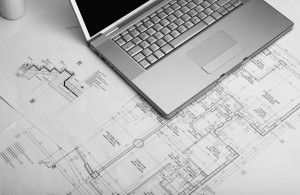Getting the design and construction of a new structure right is just the tip of the iceberg when it comes to ensuring truly sustainable long term building performance. Here Daniel Kittow, Managing Director of ABEC, explains why retaining a specialist building controls company after completion makes financial and environmental sense for a smooth transition through handover and beyond.
It stands to reason that, during the design and construction phases, the teams involved in bringing a building together accumulate a vast amount of knowledge. Controls are pivotal to building performance and the insights acquired in the early design, install and commissioning stages can be deployed effectively through handover and into the operation and maintenance phases of the building. Because of this there is a real argument for the retention of the same controls specialists for on-going monitoring and maintenance too.
This is an approach supported by Soft Landings, a strategy from BSRIA and the Useable Buildings Trust, which is supported by the government and BREEAM. It aims to provide a route through the initial phases of occupation that gradually eases new building occupants into their accommodation, ensuring that responsibilities are clearly outlined and systems are fully understood. In this way a real synergy between the expectations of the building and its actual performance can be fostered.
Engage with the process
There are five phases to a Soft Landings strategy and it is recommended that this is adopted from an early design stage, not only so that the client is fully engaged with the process but also to ensure the necessary resources can be assigned accurately.
A Soft Landings approach begins with inception and briefing. Here a constructive dialogue between the design team, construction team and the client provides space to set out the expectations for building performance. Building controls will be a key area for consideration in this discussion – what is the application of the building, how big is it, who will occupy it and how will the working schedules and user demands affect the operation of the building.
A second stage, the design development review, brings the entire project team together to review insights from comparable projects, detailing how the building will work from the point of view of those responsible for its operation – the in-house building engineer or facilities manager – and the individual users.
The pre-handover phase is next. It enables those involved in the operation of the building and the building energy management system (BEMS) to spend more time understanding the interfaces and systems prior to occupation.
Phase four provides for initial aftercare, once the organisation has fully moved into the building. It sees continued involvement from the client, as well as the design and construction teams, who benefit from the lessons learned throughout the handover process. They can draw on the data available – such as that from occupant satisfaction surveys – to ascertain where changes may need to be made.
Build up knowledge
It is in the early stages of the building’s life that the critical knowledge built up by the controls engineers will become invaluable. They can advise on the changes needed to maintain a comfortable indoor environment and the optimum ventilation levels – elements that will not only ensure energy efficiency and keep costs under control, but also support the facilities manager in these early days.
Moving into the longer term operation of the building, phase five of a Soft Landings strategy allows for extended aftercare, aiming to close the loop between the original design expectation of the building and its operational reality. This stage is vital, because it is in the medium to longer term that energy decay begins to erode the efficiency of the building’s operation. Maintaining the BEMS from occupation will prevent this decay.
Strategic approach
Without a strategic approach to building energy controls, both at the design and construction phases and into the operational life of the building, this is a real risk. It is often experienced where, even for the best designed building energy management system, subtle changes in the way the building is used can cause inefficiencies to creep in – impacting the cost and environmental performance for the client. Only through regular monitoring by a building controls specialist can anomalies be identified, responded to and adjusted accordingly.
Only through regular monitoring by a building controls specialist can anomalies be identified, responded to and adjusted accordingly.
Where a building controls company employs its own highly qualified engineers, there is additional value for the client, their own building engineers and any facilities managers. In fact a strong relationship between the controls company and in-house team, based on the professional approach of trusted building controls engineers will ensure the best results when it comes to cost and energy efficiencies.

